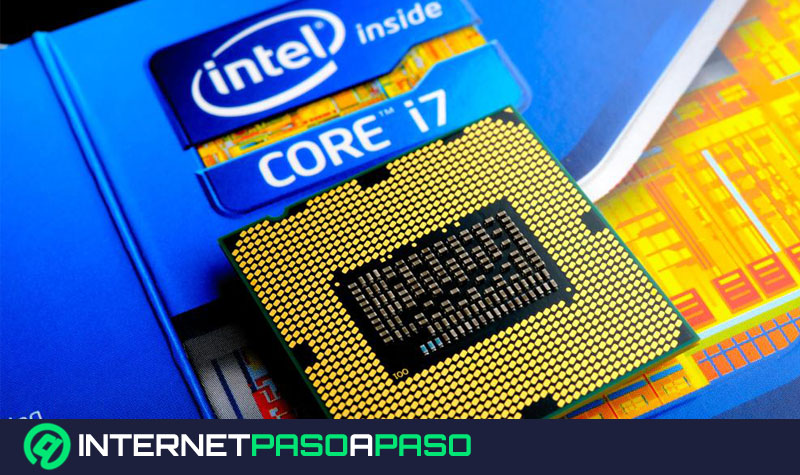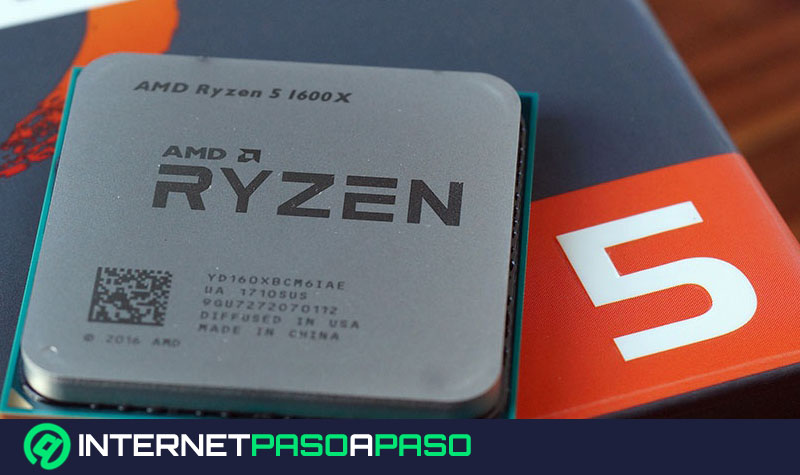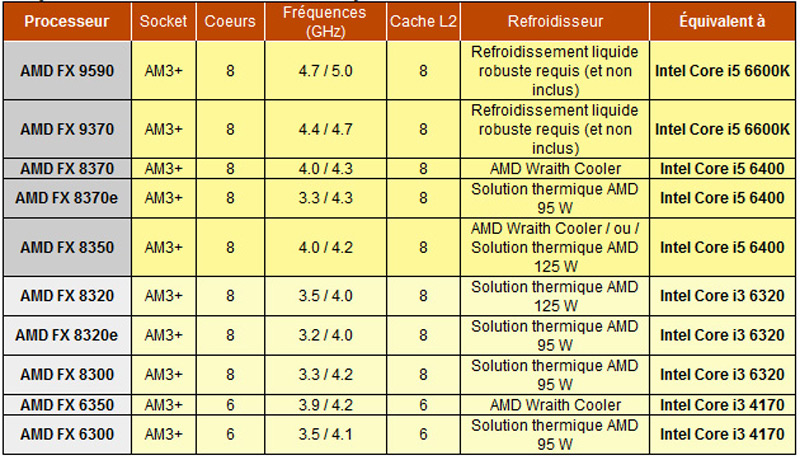
Index:
UPDATED ✅ Do you have doubts about which microprocessors are better and want to know the differences between AMD and Intel? ⭐ ENTER HERE ⭐ And find out which one is better
Today the system of Intel and AMD processors. Both are important brands in the market. Intel is an American circuit creator company, integrated by Robert Noyce and Gordon Moore. Advanced Micro Devices, Inc. better known as AMD, It is the second manufacturer that is characterized by offering processors with a great relationship between quality and price by a group of executives: Jerry Sanders, Edwin Turney, John Carey, Steven Simonsen and Jack Gifford.
These computers are usually handy for the gaming public. In addition, they are processors that are looking for new ways to continue developing products for PC gamers and continue to grow in the technology and gaming industry. Although their niche goes much further, since they are also the hearts of professional teams for designers, producers and a wide etcetera.
In this article we will talk about the characteristics and ranges of INTEL and AMD processors. Innovations in computer technology, as well as the name of the processors that implement it, will help us choose which processor is best for our needs. Do not be discouraged, here we are going to explain the details of each one of them and the most important one to work on any project, whether it is business or video games, that may interest you.
Characteristics and ranges of INTEL processors

INTELs are characterized by rely mainly on the use of other computer components such as RAM memory and video cards or GPU. This allows them to maintain a certain stability in their functions and not force themselves too much to run programs or applications that are too demanding.
In addition to that, they have an integrated air cooling system, which helps you avoid hardware damage due to overheating. An essential aspect that you should always keep in mind with these and any other processor types are their architectures.
Throughout its history, this brand has launched several of them on the market, which we mention below:
- Conroe and Wolfdale: In 2006, its new Core2 duo processor technology was born for the first time. It was then that the release name “conroe” started in four different versions. Intel would replace these with revised versions (4MB L2) known as the E6420 and E6320. 65nm Conroe was very similar to the originals, with the exception of higher speed.
- Kentsfield and Yorkfield: Its predecessor, Yorkfield’s multi-chip modules come in two sizes. The smallest version is equipped with 6MB LMB cache, and is usually called Yorkfield-6M. The largest version is equipped with 12 MB of L2 cache.
- Nehalem: Nehalem-based microprocessors use the 45nm process, run at higher clock speeds, and are more power efficient than Penryn microprocessors. Also, with a reduction in the size of the L2 cache, as well as an L3 cache.
- SandyBridge: An Intel Core i7, i5, i3 processor. Micro architecture is the heir to Nehalem micro architecture.
- ivy-bridge: It is from the third generation Intel Core i7, i5, i3. It is also a manufacturing process at 22 nanometers.
- Haswell: Developed by INTEL as the fourth generation successor. In addition, it uses a 22nm process, it also has low-power processors.
- Broadwell: Some of the Broadwell microarchitecture-based processors are marketed as 5th generation Core i3, i5 and i7 processors. Broadwell’s H and C variants are used in conjunction with the Intel 9 series chipsets (Z97, H97 and HM97), in addition to retaining.
- Sky Lake: It is the latest Intel platform, publicly Windows prior to Windows 10, although there are modifications. Some of the micro architecture based processors are marketed as Core6.
- Kaby Lake: It is the first Intel platform that lacks compatibility with Windows prior to Windows 10. Also, Windows 8.1.
- Coffee Lake: Intel released Core i3, i5, i7, Pentium Gold, Celeron desktop CPUs, the first Core i7 and i9 mobile CPUs.
- Coffee Lake Refresh: The ninth to avoid thermal problems at high speeds, and their phones are i7, i9 and i5.
INTEL Ranges
Another important aspect that defines the power of the processor is its range, which goes from the first generation of Pentium, to the latest ninth generation with the i9.
Below we mention all the ranges:
- Core 2 Duo: It is a range of dual core 2×2 MCM multichip CPUs. In addition, I improve the processor’s speed and power usage. It works well for older games.
- Core 2 Quad: It is a desktop only range and has a high power consumption server of 45W. Its latest model is Core 2 Quad QX9775.
- Celeron: It is a low-cost microprocessor, it does the same functions, but its performance is lower. It also works at the same level as other processors with advanced video game applications, video editing, etc.
- Pentium: It is a range that was distributed in speeds between 60 and 200 MHz. This had something impressive in the economic part.
- Core i3: It is a range with good powerful performance, enhanced productivity, smooth streaming and HD entertainment.
- Core i7: It is a range that provides good quality, power and capacity.
- Core i7 and Core i9 Extreme: They are a range that without a doubt the fastest CPU in tasks.
Features and ranges of AMD processors

To start talking about them, we must define that these are not processors, but microprocessors that they work with a multidirectional bus that allows much more efficient communication between the chipset and the processor itself.
In addition, they also consist of an arithmetic logic unit, and depending on the range of the same, it can contain a floating point unit that facilitates the processing. Finally, we must emphasize that these could be considered more powerful since they do not depend as much on other components as the GPU units and RAM memoriesalthough it is always good to have these.
As for the architectures, we can identify the following for AMD equipment:
- Ryzen 3: They are designed to offer superior, high-performance computing practice. It offers you a quick utility for work or games.
- Ryzen 5: These are processors with 6 and 4 cores that compete directly with the Intel i5 and even some versions of the Core i7.
- Ryze 7: Superior performance and extraordinary technology. Models that directly compete with Intel’s i5 and even some i7 versions.
- Ryzen 2000 Series: One of the most important improvements they have: Reduction of the manufacturing process to 12 nm. Increased working frequencies. Reduction in caches.
The AMD Ranges
As for the ranges of each of its processors, we can identify several of them that compete directly with those of Intel.
Below we mention each of them:
- Athlon 64 X2: It is a range that can process various tasks and its benefit is superior. In addition, its architecture is 64 bits.
- Phenomen II: It is a range that has a dual processor and also includes a set of chips.
- Athelon: It is a range of good performance and its architecture of x86. In addition, it was a success, not only because of its qualities and its low price compared to the competition, but also because of Intel’s production problems.
- APU: It is a range for modern technologies with platform offers incredible performance. In games it only offers better gaming performance than a competitor processor with a graphics card.
- AMDFX4000: It is a range with amazing performance with 95W power and 32nm technology.
- AMD FX 6000: It is a high quality processor with an operating speed of 3.6 and 4.2 GHs. It is made using a 32-nanometer manufacturing process.
- AMDFX8000-9000: Good performance and fast memory.
- ryzen 3, ryzen 5, Ryze 7: These have higher performance and capacity.
- Threadripper 1000 and 2000: They are better in performance, power and price range.
Equivalences of AMD and INTEL

If you want to know which are the equivalent models of each range between each of the brands, then we will show you in great detail.
- Core 2 Duo: They are old, the most used model is i3. With a low speed. They stand out and will outperform the Athlon 64 X2.
- Core 2 Quad: Work with performance and good frequency. Its equivalent is the Phenom II X4.
- Intel Core x00 series: It is superior and has no complications. Work with Core i3 530, Core i5 750, Core i7. Equivalent to AMD’s Phenom II X6.
- IntelCore 7000: They have a change in performance, but beat the Ryzen in IPC.
- IntelCore 8000: They have better and superior performance than the previous version.
- IntelCore 9000: It will be the next generation of Intel processors. It will work with a base frequency of 3.6 GHZ.
- Intel Extreme and Threadripper generations: These processors have a higher IPC than Core Extreme and Broadwell-E.
Which is the better choice Intel or AMD?

In our opinion, both are good, it all depends on the needs of the user. AMD is a great product with its Ryzen brand processors with high performance. In addition, they rely heavily on their low prices. Their energy is lower, they heat up faster, it is not very fast and better multimedia.
Meanwhile, INTEL is known for being efficient, for its price range it is preferred, for its speed, its cooling systems and for its speed, although they are not good for video games and their performance is very efficient. Therefore, When choosing a processor, you must choose well to give it the proper use.
If you are a businessman who needs a fast and efficient team, without a doubt Intel is your best option. Also, this range of processors is much more practical, which is why they are more common in laptopswhich guarantees greater comfort to transport it and take it with you on all your business trips.
So the choice of each of them is up to you and what you want to do with the computer on duty. Both will offer you excellent performance as long as you understand their limits.
Hardware